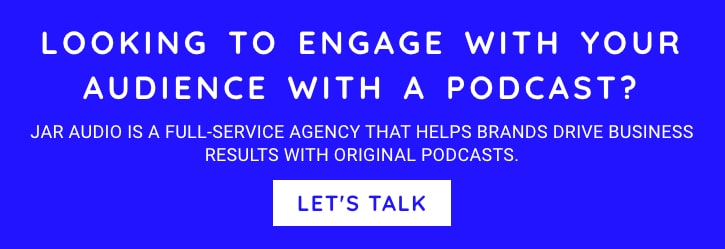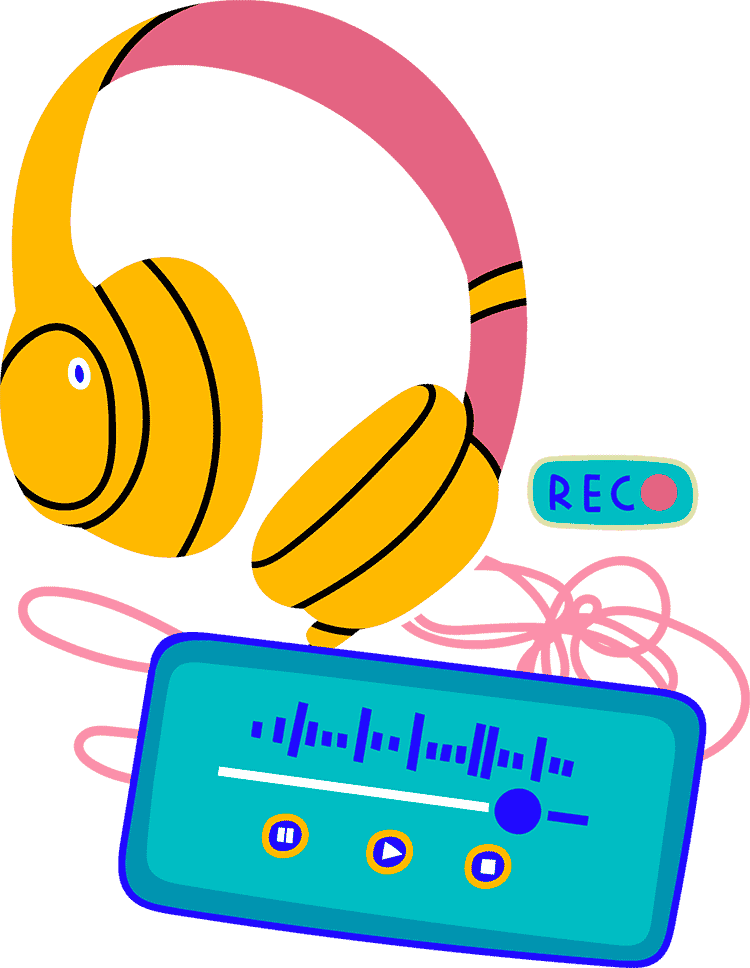Unlocking Effective Audience Growth Strategies for Branded Podcasts
Unlocking effective audience growth strategies for branded podcasts is crucial for marketers looking to expand their reach and engage loyal listeners. Though podcasting has been around in some form for ages now, it’s still a relatively new industry. As such, it can be the Wild West when it comes to audience growth strategies for branded podcasts. Where other mediums have had the time to work out best practices – knowing what content performs well and how to consistently gain an audience – much of podcasting is still testing and learning.
Yet, we don’t need to reinvent the wheel, even if some things are going to be unique to podcasting. To learn how to be effective and efficient, look to other more established mediums to learn from their hard-earned experiences.
Before joining JAR Audio, I spent roughly a decade in journalism, working for large publishers like VoxMedia and USA TODAY. I launched and built sites up from the ground, turning them into relative behemoths that earned both local and national recognition. It was in these trenches that I learned how to do everything we aim to do with branded content like podcasts:
- Find my ideal audience
- Get them to become loyal followers
- Further engage with the brand outside of the content itself
While there were so many great lessons learned in my time as a writer and editor, there are four specific truths I think those in podcasting should be taught. These lessons aren’t just concepts and brain exercises but actionable ways to improve your podcast immediately. Putting this wisdom into practice will make more engaging content and your audience will grow as a result.
1. It takes time to build a great audience
In a perfect world, everything we do will have an immediate and impressive impact. There was no better feeling than when an article got shared widely and hit the front pages of other websites like ESPN, Yahoo, and MSN. The traffic and comments rolled in, validating all the hard work and making a positive impact — not just on how the content performed but on me as a writer and editor. Those moments were the bites of dessert after eating all my vegetables and as we look at making effective branded podcasts, it’s a valuable lesson to heed.
My first articles weren’t slam dunks, earning a million pageviews each. It took months of hard work, trial and error, and hundreds of thousands of words published before having an article pop at all. And, believe it or not, the website and my standing within the community were better for it.
Instead of searching for the types of wild headlines that earn virality, I spent months creating a back catalogue of hundreds of articles that showed I was knowledgeable and had my finger on the pulse. With a variety of content up, I used both my site’s metrics and social proof to determine what types of things my audience were most interested in reading.
So, when an article went viral or marketing dollars were spent to increase my reach, the millions of people suddenly reading my work for the first time didn’t just stop there. They dove through my evergreen articles, hungry for more of my insights and expertise. While some people undoubtedly moved on to never read a thing I wrote again, plenty of others became diehard readers and supporters. That was reflected in the site’s growth, going from an inconsistent few thousand views a month to regularly reaching millions.
The lesson for podcasting is a simple one: Building your audience takes time. You can try to rush this process but it’ll take bigger marketing buys and, ultimately, you’ll struggle to grab a loyal audience. When investing in your podcast, you want results but repeatable and actionable results, not just purchased ears looking for a reason to unsubscribe.

2. Give the first and best analysis
This is a lesson I can still practically hear my network manager preaching. And for good reason.
“Don’t rush to break the story. Instead, cover it quickly with the basic facts and then spend your time writing the best and most detailed analysis of everything it means for your readers.”
This applies to podcasts more than most other mediums, in my opinion. A good episode takes time to craft – great writing teamed up with a charismatic host, with editing and sound design to bring it all together. If news breaks on Monday, it’ll be near impossible to put out a quality podcast episode by Monday evening unless you already have a team capable of supporting that schedule. By that point, the news has already been out in the world and you’ll be late to the party, turning all that time and effort into mediocre results.
Instead, focus your attention on giving your listeners a real-world understanding of the news and all the ways it can and will affect things. They have a million quicker ways of getting the news but they’re coming to you because you’re the expert that can explain it and go through all the intricacies of what it actually means. Use that to your advantage and you’ll not only increase your brand awareness but your hosts and overall brand will gain immense topic authority that’ll have listeners thinking of you first when they need the services you offer.
3. Be passionate
This links well to the previous lesson and while it should be obvious, branded content can fall into the trap of being too safe to be good. With brand safety at the top of mind, sometimes the most engaging bits get cut as everyone takes a turn editing. By the time the episode publishes, it only lists the basic facts or it’s coated in so much corporate-speak as to be dry and uninteresting. No amount of great sound design, editing, or marketing will fix that and you’ll be left with a lacklustre episode that alienates your audience rather than one that gives them reasons to recommend your podcast.
That’s not why you chose to create a podcast and it’s not what podcasts do well. Podcasts are wonderful at creating an intimate bond between host and listener, and that’s done at its best when the host can be passionate about what they’re saying. Sometimes that’ll mean a little more work in the editing phase and in fact-checking but I can guarantee that creating an episode that “works for everyone” really means no one will listen.
Let’s lay out the facts here . . . You’re competing against millions of other podcasts, including a ton of non-branded podcasts that can touch on topics and have guests that’ll never make it beyond your legal team. That’s not to say you have to put out hot takes and host guests that will earn you scorn but it does mean you have to find that passion in your own content and highlight it. It’s the thing that will get listeners excited to open their apps and put your release schedule in their calendars.

4. Find your niche
There are more than 5 million podcasts out in the world currently. Though that’s a drop in the bucket compared to other mediums – Youtube has 800 million videos uploaded for instance – it does mean that getting found organically can be incredibly difficult.
As I noted earlier, all types of mediums can fall into the trap of forgetting who their target audience is. As they chase the dream of ever-increasing downloads or views, decisions get made to have a more broad appeal. Unfortunately, as the content gets dumbed down to meet that larger audience, your real target audience gets less interested and slowly disappears. Though you might still be seeing a rise in downloads, you’re reaching fewer and fewer of the people you actually want listening.
Instead of that slow pull away from your core, you should actually dive further in. Finding niches that your target audience is interested in allows you to stand apart from your competition. Podcasts with a broad appeal can and should exist but they take more time and money to grow. Niche podcasts might have a smaller audience but they can be hyper-focused on that audience to the point of being invaluable to those people. And in the world of content marketing, being invaluable is exactly what we’re after.
For those that fear their niche is too small of an audience, I want to remind you that the internet is a MASSIVE place. It’s far more like the ever-expanding fathoms of the universe than a library (even the largest one). Niche content can and often does still land huge audiences. There are podcasts that only discuss Star Wars lore with thousands of listeners weekly, podcasts solely for tax lawyers about new tax laws that have large audiences and get national recognition . . . I promise that your podcast about whatever can find a loyal audience that’ll follow you to the ends of the Earth.
A podcast can be a massive tool in your brand’s toolbox. But much like trying to hammer a screw, you’ll have more success using the right tools in the right way. I hope these insights help you craft a better podcast that your audience loves or at least point you in the right direction for what your podcast can actually do for you.
5 Key Takeaways on Audience Growth Strategies for Branded Podcasts
- Building an audience takes time and consistent effort. Just like with written content, your podcast audience will grow as you produce quality episodes regularly.
- Provide in-depth analysis rather than breaking news. Focus on delivering detailed and insightful content that sets your podcast apart as an authority.
- Passion is key to engaging content. Ensure your episodes convey genuine enthusiasm to keep your listeners interested.
- Finding your niche is crucial. Targeting a specific, well-defined audience can help your podcast stand out and attract loyal listeners.
- Learn from other media. Apply successful strategies from established media to enhance your podcast’s growth and engagement.
By Matthew Stevens, Audience Growth Specialist at JAR Audio

As the Director of Audience Growth, Liz leads a team of audience growth specialists at JAR, focusing on finding and growing the right audiences for clients. With over a decade of experience in journalism and podcast production, Liz uses data and creativity to create winning strategies. Since joining JAR in 2022, she has integrated audience growth into the production process. Previously, she worked at CBC, Pacific Content, and advised on award-winning podcasts.




